
Haptic & Hue
Jo Andrews
- 38 minutes 32 secondsThe Forgotten Medieval Craft of Cloth Staining
From the grandest palace to the poorest cottage, so-called ‘stained’ cloths brought colour and joy to everyday life in England for hundreds of years. These specially painted and stamped fabrics formed the backdrop to funerals, ceremonies, processions, masques, and tournaments that required banners, flags, pennants or scenery from 1300 onwards. But this world of dazzling medieval colour and pattern has been mostly lost to history because so much of the cloth has perished, and the craft of the stainers has been so little understood. Now Haptic & Hue re-discovers the secrets of making stained cloth and looks at how it was used.
This episode uncovers the secrets of the 14th century fabric stainers which lie in a pocket-sized book, transcribed more than six hundred years ago, by monks at Gloucester Cathedral. It contains 30 recipes for preparing cloth and special water-based colours to permanently paint and block print wool and linen. Haptic & Hue took a trip to Gloucester Cathedral to explore the lost world of medieval textiles.
For more information, a full transcript and further links, see https://hapticandhue.com/tales-of-textiles-series-6/
4 April 2024, 4:17 am - 38 minutes 11 secondsInvisible Hands: Tapestry Weavers and Artists
Great tapestries have been used to decorate and embellish homes and palaces for centuries, and yet the hands that created these works remain almost completely forgotten. Art institutions treasure their ancient tapestries woven painstakingly over many months, and even years and know almost everything about them, except the names of those who created these extraordinary pieces. Modern artists, like Picasso, Henry Moore and Marc Chagall see their work rendered into a different and exciting form by tapestry weavers, but no-one remembers who the weaver was or is.
This episode of Haptic and Hue looks at tapestry weaving and the process of collaboration that goes on between an artist and a weaver to produce a new work. It asks if tapestry weavers are forever destined to be seen as anonymous helping hands, or if their skill, craft and artistry is now, finally, beginning to be recognised as an art in its own right. We talk to a gifted tapestry weaver about what it is like to work on a piece for several months and how much of herself she pours into each new weaving.
For more information, a full transcript and further links, see https://hapticandhue.com/tales-of-textiles-series-6/
7 March 2024, 4:30 am - 38 minutes 34 secondsThe Garment That Sweeps Through History: The Everlasting Cloak
There’s a piece of clothing that has a good claim to being a universal garment. It is thousands of years old and yet it featured on the catwalks last year. It’s stylish and at the same time the humblest and simplest of garments. It has been worn and enjoyed by rich and poor alike. It has been repurposed and reshaped throughout human history and it has fulfilled many functions.
The cloak has kept us good company throughout the centuries, it has marched with armies across plains and deserts, it has been sanctified and worn by saints, and was just as beloved by sinners such as highwaymen. It became the emblem of witches on broomsticks and superheroes flying through the sky. It was worn by hobbits to make them invisible and it is still revered as the ultimate in stylish outerwear by Venetians.
This episode of Haptic & Hue looks at the cloak, cape, cope, mantle, and all its other many forms through history and tries to answer the question of why it has proved such a joyful, useful and versatile garment.
For more information, a full transcript and further links, see https://hapticandhue.com/tales-of-textiles-series-6/
1 February 2024, 4:30 am - 43 minutes 26 secondsUkraine's Revolutionary Act of Embroidery: How Identity Survives in Stitches
As the war in the Ukraine brutally shows, few people have had as hard a struggle down the centuries to maintain their identity as Ukrainians. For hundreds of years, they have been occupied and subjugated by one power after another, the Ottomans, the Austro-Hungarian Empire, Russia, Poland, the Nazis, and Russia again. Through it all Ukrainians have held onto their traditions: one of the strongest of these has been the beautifully and skilfully stitched motifs on plain linen or hemp shirts.
The embroidery of Ukraine is one of its secret weapons and an incredible defence against the cultural annihilation that has been practiced against it. What it means to be a Ukrainian is powerfully expressed in the complex and beautifully worked stitches that go into decorating their national dress. The knowledge of what each stitch means and the skill to make these shirts is thriving and continues to be passed down the generations. This episode of Haptic & Hue is about how the beautifully embroidered shirts and blouses of Ukraine have endured as a symbol of the country’s fight for existence and have become so entwined with the identity of Ukrainians that some refer to it as part of their genetic code.
For more information, a full transcript and further links, see https://hapticandhue.com/tales-of-textiles-series-6
4 January 2024, 4:00 am - 29 minutes 59 secondsThe Point of The Needle - How the Ancient Craft of Stitching Shapes Us
The needle and thread have been humanity’s constant companions for tens of thousands of years: far longer than the dog, the sword, or the wheel, and much longer than reading and writing. Down the centuries the needle has rendered us incredible service and we have come to depend on it. And yet the activity of stitching has long been ignored in the record of human endeavour. Even the modern trend for embracing making and craft tends to leave out sewing. But a new book just out, comes to try to redress the balance.
Haptic & Hue’s Book of the Year for 2023 is Barbara Burman’s The Point of The Needle. In it, Barbara says ‘stitching and stitches are valued precisely because they embody human life and invention, and cloth itself is inseparable from them’. Barbara was the co-author of the well-received book called ‘The Pocket – A Secret History of Women’s Lives’, but in this new book, Barbara has a much bigger canvas: to rescue sewing from the twilight and to celebrate it as a fundamental human activity.
For more information, a full transcript, and further links, https://hapticandhue.com/tales-of-textiles-series-5/
7 December 2023, 4:01 am - 39 minutes 57 secondsThe Language of Thread - Why Sewing Matters and How It Was Taught
Sewing is one of the most vital but also one of the most overlooked human crafts. Every piece of clothing we wear has been put together by someone who has learned to sew. Millions of people sew for pleasure and millions more earn their living in the textile and clothing industries – often in underpaid and unprotected jobs.
The craft of using a needle has been one of humanity’s greatest skills, ever since this tiny piece of technology came into use around 60,000 years ago. It is something that unites us all as human beings, regardless of ethnicity, religion or geography. For most of time, sewing as a skill was passed from generation to generation. But, in the last few hundred years, as textiles and thread have been produced in abundance, how we learned to sew became a political matter. Governments, churches, politicians, and corporations all had a view on the morality and the methods necessary to turn out the ideal needlewoman.
This episode of Haptic & Hue tells the little-known story of how two separate sewing schools on different sides of the Atlantic gave women all over the world a new life of economic independence, social status and personal power. One of these education programmes took the Singer sewing machine into every corner of the globe. The other, a ground-breaking teacher training college in London, had an impact on the lives of millions of girls all over the world.
For more information, a full transcript and further links, https://hapticandhue.com/tales-of-textiles-series-5/
2 November 2023, 3:30 am - 41 minutes 32 secondsCabbage and Mungo: How Recycling Returned To Savile Row
There is a quiet revolution happening on Savile Row in London, home to some of the world’s finest men’s outfitters, as the makers of bespoke suits embrace textile recycling in a unique new scheme. A number of houses on The Row have been collecting woollen offcuts as they cut and tailor handmade men’s clothing – just as they did in times gone by– and sending them off to be recycled into new yarn, which is then woven into fresh cloth. The radical difference is that this time the recycled cloth is being bought back by these high-end workshops to be tailored and sold to the Row’s own bespoke customers.
Savile Row, in the heart of London, has been at the centre of high-quality men’s tailoring for 200 years. It has supplied handmade suits, from the finest woven cloth, to film stars and royalty, to statesmen and sportsmen. It has a reputation for quality and excellence second to none. Now it is embracing recycling, and it seems, its top-end clients are happy to pay for it.
It’s incredibly rare to find a recycling loop like this one – especially in textiles - where the waste is turned into quality new material to be used by the same workshops that created it in the first place. This episode tells the story of how this is happening and follows the journey that turns tiny bits of fabric that would previously have been binned, into new bespoke garments, ones that come with great credentials and an interesting story behind them.
Along the way Haptic & Hue gets a privileged glimpse into the world of Savile Row tailoring – the training and the standards that need to be maintained from start to finish to produce a garment that may well last a century or more.
If you would like to see a full script of this episode, see photos or discover links to further information about the topics discussed you can find all this information at www.hapticandhue.com/listen. You can follow Haptic & Hue on www.instagram.com/hapticandhue/
5 October 2023, 3:30 am - 43 minutes 50 secondsThe People's Art - Material and The Modern Masters
Have you ever wanted a Picasso on your walls – or maybe a Joan Miro, a Chagall, or perhaps a Raoul Dufy? For a time in the mid-50s in America you could buy work by these artists for just a few dollars: that's a few dollars a yard, because these were fabrics and not original paintings – but they were beautifully designed, sophisticated, and elegant.
As peace crept back after World War Two there was an intense hunger for new design. After five long years of uniforms, and sacrifice, people wanted something interesting to wear, and colourful fabrics to decorate their homes with. In America manufacturers were quick to turn their machines from military production to domestic demand.
This episode of Haptic & Hue is about how fresh and fashionable textiles were amongst the first items people were able to enjoy in the post-war period. It focuses on a short period when manufacturers turned to established artists, like Picasso, Raoul Dufy, Marc Chagall and Miro, to help them create brilliant new textiles. It looks in particular at Daniel B Fuller’s attempt to build what he called “A Museum Without Walls’ with his Modern Masters series of textiles in the 1950s.
It is also about what grew out of that, and tells the story of a young artist, unknown at the time, who worked for these same textile producers as a pattern designer, using his experience and skills to change the face of twentieth century art.
For more information, a full transcript, and further links, https://hapticandhue.com/tales-of-textiles-series-5/
7 September 2023, 3:30 am - 41 minutes 30 secondsThe Tangled Tale of Tartan
Who doesn’t love a good tartan? It is everywhere from high fashion catwalks to shooting parties on winter hillsides, from military uniforms on parade to much-loved old sofas. It is at home in the humblest of cottages and the most splendid of royal palaces. It has a kaleidoscope of different uses and meanings. It is one of the most recognised patterns on earth, a global textile, visible almost everywhere.
But tartan is much more than a pattern, it is a fabric of contradiction and surprise. It holds many meanings, often simultaneously. It can represent the establishment and the power of the state, and at the same time signify rebellion and treachery. It can be an emblem of enslavement and oppression, or it can represent comfort, family, and home. Its meanings are as diverse as its many patterns.
In this episode of Haptic & Hue’s Tales of Textiles, we look at where tartan comes from and how it acquired its many meanings and controversies, and why some people love it and others hate it. Tartan is a textile of duality, able to hold many ideas within its simple grid design. It has a history that has spread out across the world and taken a sense of what it means to be Scottish with it.
But there is more than history to tartan: we also hear from a bespoke kilt-maker, who designs and registers her own tartans. She creates modern tartans able to embrace new definitions of identity and community and expand far beyond the Highland glens they first sprung from.
All of this has been put into context by the first exhibition in living memory about Tartan in Scotland itself, which opened in April 2023 at the Victoria and Albert Museum in Dundee, which we went to see as part of making this episode.
For more information, a full transcript, and further links, https://hapticandhue.com/tales-of-textiles-series-5/
1 June 2023, 3:30 am - 39 minutes 6 secondsA Dance to The Music of Time
This is the tale of how textiles played a central part in one of the great cultural and artistic upheavals of the last century, helping to bring about a change that was to reach deep into many lives, influencing fashion, interior design, illustration, art, and dance.
The Ballet Russe, gathered together by the mercurial figure of Serge Diaghilev in the early part of the twentieth century, was revolutionary in almost everything it did. The dancers, the music, the choreography, the sets, and the costumes astonished audiences – no one had seen anything like it before. The ballets became so popular that the costumes were copied by fashion designers and began to appear on the street.
The Ballet Russe was such a phenomenon that artists like Matisse and Picasso were happy to design for it, joining in-house artists like Bakst and Goncharova. Today, over a hundred years later, very little survives of the incredible performances given across Europe and America by the company, except the glorious music and the wonderful costumes.
These are often battered and bruised by a life on the road – they are far from pristine, stained with sweat and makeup, repaired and remade, but they have extraordinary power and wonderful stories to tell us, of where they were made and how they were used to change our ideas about dance and culture.
For more information, a full transcript, and further links, https://hapticandhue.com/tales-of-textiles-series-5/
4 May 2023, 3:30 am - 49 minutes 23 secondsA Sliver of Deep Blue Cloth
Warning: This podcast and the text below uses terms considered offensive and inappropriate today.
An extraordinary sample of indigo cloth has been found in a British record office which is thought to be a rare surviving fragment of fabric used to clothe enslaved people in the Caribbean and North America. The Haptic & Hue team of Jo Andrews and Bill Taylor was alerted to its existence in early January. We travelled to Derbyshire to see it and realised from a note on the back that we were looking at a piece of so-called ‘slave’ cloth, handwoven in Yorkshire in 1783. Millions of yards of this fabric were handmade in Britain and Ireland and sent to the plantations for nearly two hundred years, but until now none was known to have survived.
This episode of Haptic & Hue unravels the story-threads of this tiny piece of cloth which begin on the upland moors of Yorkshire, and takes us to America and the Caribbean, but also involve Wales, the Lake District, Ireland, Scotland, Germany, Poland, Russia, and the Baltic. The different light that textiles cast on this history show us how profits from the system of slavery were part of the everyday lives of workers and landowners all over Britain and Europe and didn’t just benefit a few rich plantation owners.
For more information, a full transcript, and further links, https://hapticandhue.com/tales-of-textiles-series-5/
6 April 2023, 3:00 am - More Episodes? Get the App
Your feedback is valuable to us. Should you encounter any bugs, glitches, lack of functionality or other problems, please email us on [email protected] or join Moon.FM Telegram Group where you can talk directly to the dev team who are happy to answer any queries.
 Seamwork Radio: Sewing and Creativity
Seamwork Radio: Sewing and Creativity
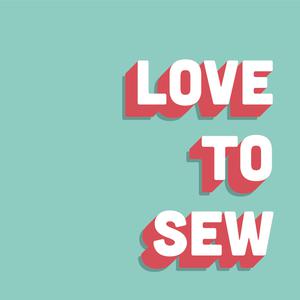 Love to Sew Podcast
Love to Sew Podcast
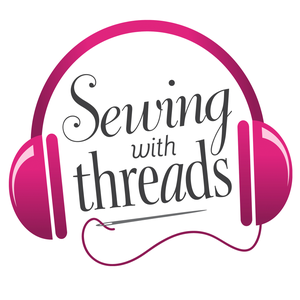 Threads Magazine Podcast: "Sewing With Threads"
Threads Magazine Podcast: "Sewing With Threads"
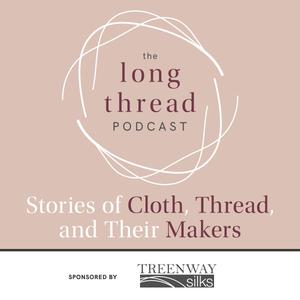 The Long Thread Podcast
The Long Thread Podcast
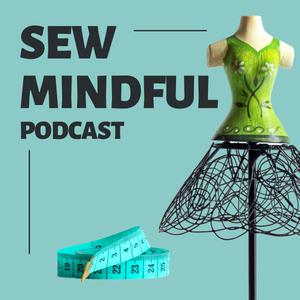 Sew Mindful Podcast
Sew Mindful Podcast
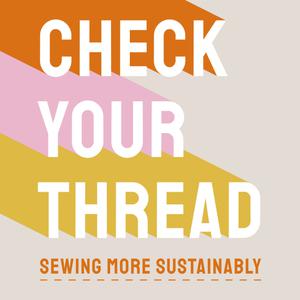 Check Your Thread
Check Your Thread